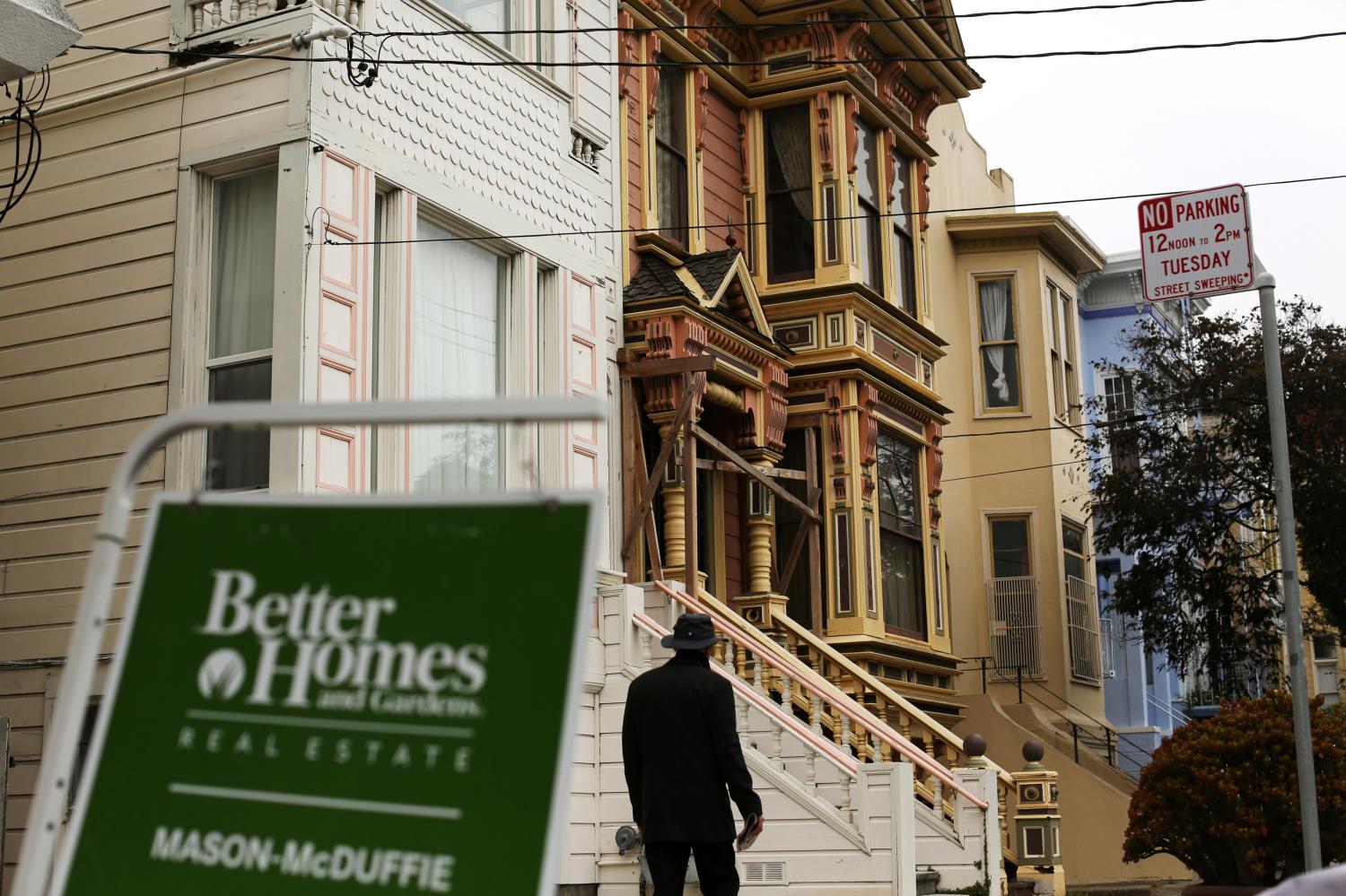This report is part of the Series on Market and Government Failures and was produced by the Brookings Center on Regulation and Markets.
Arguably, land use controls have a more widespread impact on the lives of ordinary Americans than any other regulation. These controls, typically imposed by localities, make housing more expensive and restrict the growth of America’s most successful metropolitan areas. These regulations have accreted over time with virtually no cost-benefit analysis. Restricting growth is often locally popular. Promoting affordability is hardly a financially attractive aim for someone who owns a home. Yet the maze of local land use controls imposes costs on outsiders, and on the American economy as a whole.
New York City enacted its pioneering zoning code in 1916. The Supreme Court only established the constitutionality of Euclidean zoning, which restricts neighborhoods to single uses, in 1926. Yet, these restrictions didn’t meaningfully prevent new building in much of America until the 1970s. Abundant new construction, not just in Texas but also in New York, Los Angeles and greater San Francisco, ensured that as late as 1970, prices remained close to the physical costs of construction in much of America.
Yet starting in the 1960s, a property rights revolution occurred in the U.S. Backed by environmentalist rhetoric in the suburbs and preservationist priorities in the cities, American localities increasingly restricted the rights of property owners to build. We changed from a country in which landowners had relatively unfettered freedom to add density to a country in which veto rights over new projects are shared by a dizzying array of abutters and stakeholders. Consequently, we now build far less in the most successful, best educated parts of the country, and housing prices in these areas are far higher than construction costs or prices elsewhere.
Affordability and Construction Costs
In ordinary conversation, people usually just discuss nominal housing prices. Housing advocates often discuss affordability, which is defined by linking the cost of living to incomes. But the regulatory approach on housing should compare housing prices to the Minimum Profitable Construction Cost, or MPPC. An unfettered construction market won’t magically reduce the price of purchasing lumber or plumbing. The best price outcome possible, without subsidies, is that prices hew more closely to the physical cost of building.
In a recent paper with Joseph Gyourko, we characterize the distribution of prices relative to Minimum Profitable Construction Costs across the U.S. These costs are based on R.S. Means, which estimates building costs and sells these estimates to the construction industry. We base our estimates on an “economy” quality home, and assume that builders in an unregulated market should expect to earn 17 percent over this purely physical cost of construction, which would have to cover other soft costs of construction including land assembly.
We then compare these construction costs with the distribution of self-assessed housing values in the American Housing Survey. The distribution of price to MPPC ratios shows a nation of extremes. Fully, 40 percent of the American Housing Survey homes are valued at 75 percent or less of their Minimum Profitable Production Cost. This finding is not that surprising. Most homes are old and we are comparing them to the cost of building new housing. Most used cars also sell for much less than the price of building a new car. Another 33 percent of homes are valued at between 75 percent and 125 percent of construction costs.
Other data seems to support that most American homes do not seem to have been valued for much more than replacement costs in 2013 view. In 2014, seventy percent of the metropolitan areas covered by the National Association of Realtors had median sales prices below $200,000, and these typically reflect somewhat newer, nicer homes. We also found that 85 percent of the metropolitan areas in our sample had median price to MPPC ratios that were below 125 percent. Price growth has been steady since 2013, which is unfortunately, the last year for which we have both R.S. Means and American Housing Survey data, but the basic point that much of America remains quite affordable is still true today.
But most productive parts of America are unaffordable. The National Association of Realtors data shows median sales prices over $1,000,000 in the San Jose metropolitan area and over $500,000 in Los Angeles. One tenth of American homes in 2013 were valued at more than double Minimum Profitable Production Costs, and assuredly the share is much higher today. In 2005, at the height of the boom, almost 30 percent of American homes were valued at more than twice production costs. Our painful housing bust eliminated some of the affordability problem in our most expensive areas, but that problem has returned.
America’s affordability problem is local, not national, but that doesn’t mean that land use regulations don’t have national implications. Historically, when parts of America experienced outsized economic success, they built enormous amounts of housing. New housing allowed thousands of Americans to participate in the productivity of that locality. Between 1880 and 1910, bustling Chicago’s population grew by an average of 56,000 each year. Today, San Francisco is one of the great capitals of the information age, yet from 1980 to 2010, that city’s population grew by only 4200 people per year.
Land use controls that limit the growth of such successful cities mean that Americans increasingly live in places that make it easy to build, not in places with higher levels of productivity.
Land use controls that limit the growth of such successful cities mean that Americans increasingly live in places that make it easy to build, not in places with higher levels of productivity. Hsieh and Moretti (2015) have estimated that “lowering regulatory constraints” in areas like New York and Silicon Valley would “increase U.S. GDP by 9.5%.” Whether these exact figures are correct, they provide a basis for the claim that America’s most important, and potentially costly, regulations are land use controls.
Supply, Geography and Regulation
How do we know that high housing costs have anything to do with artificial restrictions on supply? Perhaps the most compelling argument uses the tools of Economics 101. If demand alone drove prices, then we should expect to see places that have high costs also have high levels of construction.
The reverse is true. Places that are expensive don’t build a lot and places that build a lot aren’t expensive. San Francisco and urban Honolulu have the highest ratios of prices to construction costs in our data, and these areas permitted little housing between 2000 and 2013. In our sample, Las Vegas was the biggest builder and it emerged from the crisis with home values far below construction costs.
The primary alternative to the view that regulation is responsible for limiting supply and boosting prices is that some areas have a natural shortage of land.
Albert Saiz’s (2011) work on geography and housing supply shows that where geography, like water and hills, constrains building, prices are higher. He also finds that measures of housing regulation predict less building and higher prices.
But lack of land can’t be the whole story. Many expensive parts of America, like Middlesex County Massachusetts, have modest density levels and low levels of construction. Other areas, like Harris County, Texas, have higher density levels, higher construction rates and lower prices. Across Massachusetts towns, Glaeser and Ward (2009) found that there was more construction in places, like Chelsea and Revere, with higher initial density levels and modest prices.
If land scarcity was the whole story, then we should expect houses on large lots to be extremely expensive in America’s high priced metropolitan areas. Yet typically, the willingness to pay for an extra acre of land is low, even in high cost areas. We should also expect apartments to cost roughly the cost of adding an extra story to a high-rise building, since growing up doesn’t require more land. Typically, Manhattan apartments are sold for far more than the engineering cost of growing up, which implies the power of regulatory constraints (Glaeser, Gyourko and Saks, 2005).
Naturally, there are also a host of papers, including Glaeser and Ward (2009), showing the correlation between different types of rules and either reductions in new construction or increases in prices or both. The problem with empirical work any particular land use control is that there are so many ways to say no to new construction. Since the rules usually go together, it is almost impossible to identify the impact of any particular land use control. Moreover, eliminating one rule is unlikely to make much difference, since anti-growth communities would easily find ways to block construction in other ways.
Public Policy and Land Use Regulations
Land use controls may be benign even if they restrict growth and increase prices. Their proponents argue that they prevent environmental damage and reduce the downsides of local growth to the community. Theoretically, it is at least conceivable that America’s web of locally-constructed zoning codes have worked out to be a finely tuned system that functions like a perfect Pigouvian tax internalizing all the offsetting externalities of all new construction.
Yet such a view seems untenable. Getting the right national policy requires comparing the social costs of building in one location versus the costs of building elsewhere. Few localities seriously consider the negative impact that restricting buying will have on non-residents of their town. No locality considers the impact that their local rules may induce more building elsewhere.
California builders have faced an onerous Environment Impact Review process since the 1972 Friends of Mammoth Case. When environmental rules prevent building in highly productive, highly restricted coastal California, homes get built elsewhere, like Las Vegas and Houston. Carbon emissions per household are lower in coastal California than elsewhere in the country, primarily because of a benign Mediterranean climate (Glaeser and Kahn, 2010). California’s land use restrictions don’t eliminate new construction, they merely move it elsewhere, so it isn’t enough to have a purely local perspective. In California’s case, preventing local construction for environmental reasons only ends up increasing carbon emissions by pushing building to less salubrious climes.
Empirically, there is also little evidence that these land use controls correct for real externalities. For example, if people really value the lower density levels that land use controls create, then we should expect to see much higher prices in communities with lower density levels, holding distance to the city center fixed. We do not (Glaeser and War, 2010). Our attempt to assess the total externalities generated by building in Manhattan found that they were tiny relative to the implicit tax on building created by land use controls (Glaeser, Gyourko and Saks, 2005).
Reforming Land Use Controls
Reforming land use controls is so difficult, because they are generated at such a low level of government. Washington didn’t make these rules, and constitutionally, H.U.D. doesn’t have the authority to rewrite them. Most localities like the rules that they have, so there is little chance of regulatory reform from either the top down or the bottom up.
The right strategy is to start in the middle. States do have the ability to rewrite local land use powers, and state leaders are more likely to perceive the downsides of over regulating new construction. Some state policies, like Masschusetts Chapter 40B, 40R and 40S, explicitly attempt to check local land use controls. In New Jersey, the state Supreme Court fought against restrictive local zoning rules in the Mount Laurel decision.
If states do want to reform local land use controls, they might start with a serious cost benefit analysis and then require localities to refrain from any new regulations without first performing cost-benefit analyses of their own. Once the state has decided that current rules are too restrictive, there are two plausible models.
The first, more powerful model is to override local land use controls entirely if a community has prices that are too high and permits too little. Massachusetts Chapter 40B provides a model, where builders can bypass local rules if a community doesn’t have enough affordable housing. This bypass is effective, but it is also unpopular.
A somewhat softer approach is to provide stronger incentives for permitting building, which is the model provided by Massachusetts Chapter 40R and 40S and the Mount Laurel decision. In this model, high price communities that permit too little new construction would pay a transfer to the state that would be transferred to communities that build more. This process is more politically palatable, but also less sure to yield immediate impact.
Reforming local land use controls is one of those rare areas in which the libertarian and the progressive agree. The current system restricts the freedom of the property owner, and also makes life harder for poorer Americans. The politics of zoning reform may be hard, but our land use regulations are badly in need of rethinking.
References
Glaeser, Edward L., Joseph Gyourko, and Raven Saks. “Why is Manhattan so expensive? Regulation and the rise in housing prices.” The Journal of Law and Economics 48, no. 2 (2005): 331-369.
Glaeser, Edward L., and Matthew E. Kahn. “The greenness of cities: carbon dioxide emissions and urban development.” Journal of urban economics 67, no. 3 (2010): 404-418.
Glaeser, Edward L., and Bryce A. Ward. “The causes and consequences of land use regulation: Evidence from Greater Boston.” Journal of Urban Economics 65, no. 3 (2009): 265-278.
Hsieh, Chang-Tai, and Enrico Moretti. Why do cities matter? Local growth and aggregate growth. No. w21154. National Bureau of Economic Research, 2015.
Saiz, Albert. “The geographic determinants of housing supply.” The Quarterly Journal of Economics 125, no. 3 (2010): 1253-1296.
Edward Glaeser has received speaking fees from real estate-related entities that may have an interest in this article. He’s also received support from Harvard’s Taubman Center for State and Local Government and Tishman/Speyer for research unrelated to this article.
The Brookings Institution is committed to quality, independence, and impact.
We are supported by a diverse array of funders. In line with our values and policies, each Brookings publication represents the sole views of its author(s).









